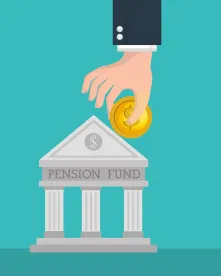This episode of The Proskauer Benefits Brief is the first of our three-part series analyzing the Pension Benefit Guaranty Corporation (PBGC) guidance on the new special financial assistance program for troubled multiemployer pension plans that was created by the American Rescue Plan Act (ARPA). In this initial episode, partner Rob Projansky and senior counsel Justin Alex cover the basic contours of the program.
ROBERT PROJANSKY: Hello and welcome to the Proskauer Benefits Brief: Legal Insights on Employee Benefits and Executive Compensation. I’m Rob Projansky. And on today’s episode, I’m joined by Justin Alex. Hi, Justin.
JUSTIN ALEX: Hi, Rob.
ROBERT PROJANSKY: So this is the first installment of a three-part series on the new special financial assistance program created by the American Rescue Plan Act of 2021 for troubled multiemployer plans. We affectionately call it ARPA. The series is going to focus on the interim guidance issued by the Pension Benefit Guaranty Corporation in July 2021 regarding this program. In today’s podcast, Justin and I plan to cover the basic contours of the program at a pretty high level. So this one will be basic and if you follow ARPA, we are not going to surprise you. However, in the rest of the series, Justin and I hope to dig deeper into some of the more critical issues, such as the calculation of financial assistance, the application process, special rules that apply to plans that receive the assistance, and how the program impacts withdrawal liability for employers.
Justin, if it makes sense, maybe I can take thirty seconds to talk about why this law is here in the first place. I think the context is helpful in understanding the law and the interim final regulations. On that score there are a number of multi-employer plans that were headed toward insolvency due to a variety of factors, industry changes, demographic changes- the 2008 financial crisis certainly had an impact. That included some pretty large plans. So large that the PBGC, the government agency that insures benefits up to certain maximum amounts, was itself projected to become insolvent. And on a scale of one to bad, that would be pretty bad. And the reason is that, it would mean that when the plans go insolvent themselves, the PBGC would not have the money to backstop the plan and really provide meaningful pensions to the plans for retirees. So the good news, we thought, was that in 2014, Congress passed a law called MPRA, which allowed plans to apply to the government to reduce already earned benefits in order to preserve the plan’s solvency. And the idea was that they could reduce benefits a little bit to avoid reducing benefits a lot when the plan goes insolvent. Unfortunately, that didn’t end up solving the problem, in part because the application of one very large plan was denied and it continued to head toward insolvency and the PBGC with it. A number of stakeholders, from unions to contributing employers, to the plans themselves, were pursuing for a number of years other legislative reforms to resolve the issue, but being careful not to undermine retirement security. So along comes the American Rescue Plan, which included that type of relief. Justin, that’s where I’ll turn it over to you. Maybe you can start us off describing the ARPA program in a nutshell.
JUSTIN ALEX: Sure. The multiemployer pension fix that was ultimately enacted, is a new special financial assistance program that is administered by the PBGC. Under the new program, eligible plans will be able to get a one-time lump sum payment from the PBGC that they will never need to repay. And that’s a notable difference between this solution and one of the other proposals that had previously gotten a lot of attention, which had contemplated making loans to plans at very low-interest rates. Now, as Rob noted earlier, prior to this legislation, the PBGC itself was projected to become insolvent, but the legislation appropriates new funds to the PBGC from Treasury to make the payments and the appropriation is essentially a blank check for whatever amount is necessary to provide the applicable relief.
The PBGC currently estimates that the program will dole out about $94 billion in total, so it’s huge. In terms of the specific relief available to an eligible plan, there are a lot of nuances that we’ll talk about in more detail in the next episode. But at a high level, the idea is to give a plan enough to remain solvent and pay all benefits owed through 2051. Now in practice, some plans might end up getting enough to stay solvent past 2051, while others might not actually get enough to make it quite that far. And we’ll talk about why that is in the next episode. The program itself is only available for a limited window of time to plans that meet the applicable criteria during that window. This isn’t a program that exists in perpetuity, you know, it’s really there to solve the near-term problem for the most critically underfunded plans. And mostly we’re talking about plans in critical and declining status, meaning that they’re going to run out of money in the next 15 to 20 years.
But the eligible plans also include those that have previously reduced benefits under the Multiemployer Pension Reform Act, plans that are insolvent but have not yet terminated and also certain plans that aren’t projected to become insolvent in the near term but that are still very poorly funded and have bad demographics. For plans that aren’t eligible and that become troubled down the road, the program won’t be available. And those plans would instead have to rely on the existing tools available under the law, most notably the one added by the Multiemployer Pension Reform Act, which allows plans to apply to reduce already earned benefits if they can show that doing so would allow them to avoid insolvency. Now one particularly interesting aspect of this new program, in my opinion, is that the application process itself is intended to be objective and limit PBGC’s discretion to approve or deny it. We’ll talk about this more in the second episode, but the key here is that if a plan meets the objective requirements for eligibility, the plan will get a payment through the program. There may be some subjectivity to the amount of relief, as we’ll discuss, but the positive thing is that the standard for eligibility itself is intended to be objective.
To help streamline the process, the statute does also require that the PBGC limit the application materials that are necessary to the minimum amount needed for the PBGC to determine whether they will approve or deny the application. This isn’t to say the application process is simple by any means, it’s quite complicated still, and there is a lot involved in terms of justifying changes to various plan assumptions, for example. But the idea is that this is supposed to be more streamlined and efficient than the process for applying for benefit reductions under the Multiemployer Pension Reform Act. We’ll talk about this more in the third installment, but one key feature of the law is that it allows PBGC to impose restrictions on plans that receive the relief. Rob, do you want to take a minute or two to talk about why that’s there.
ROBERT PROJANSKY: Sure, Justin. It seems that the rationale behind this is two-fold. First, in some sense, you can say that the government wants to protect its investment. So for example, there are some liquidity requirements where a year’s worth of benefits payments has to be put in certain permissible investments, like investment-grade bonds, even after the special financial assistance is all used up. Another example of that is mergers or transfers of assets or liabilities need to be approved by the PBGC in advance. And I think what’s happening here is that, the government just wants to ensure that the money is there to pay benefits through 2051, or at least as close as they can get. I think the second reason is that, the government does not want to provide all of this money. Only to find out that it isn’t used for the intended purpose to support the existing structure through 2051. So for example, the PBGC is restricting the ability to increase plan benefits or to decrease contribution rates. They don’t want to support a different structure. Another example is that PBGC is requiring that when plans calculate the liability of withdrawing employers, they do so using more conservative assumptions that will result in higher nominal withdrawal liability. And we’re going to talk about the practical impact of that in our third episode, as you mentioned. Now, you’ve heard the five to seven-minute highest level overview of the relief of course, as with any pension legislation, the devil is really in the details.
In our next two episodes, Justin and I are going to spend some time digging into the details of a few of the provisions of the law and discuss their practical impact, now that we’ve left you with that exciting edge of the seat cliffhanger. Thank you for joining us today on Proskauer Benefits Brief.




 />i
/>i

